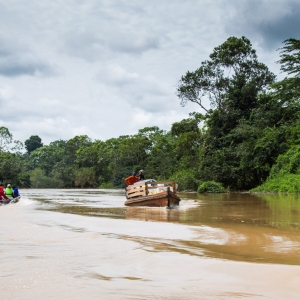Welcome to “What’s Up With Water,” your need-to-know news of the world’s water from Circle of Blue. I’m Eileen Wray-McCann.
——
In Iran, human rights groups say they have identified at least nine people killed in July during protests over water shortages. Human Rights Watch and others are calling for an independent investigation into the Iranian government’s alleged use of deadly force against the protestors. The public demonstrations were mainly in the southwestern province of Khuzestan, an oil-producing region that is home to a large Arab population. Kaveh Madani, an expert on water in Iran, told the news outlet PRI that unsustainable water use in the province means that the reservoir system is essentially bankrupt.
——
In Argentina, government officials declared an emergency over the dwindling Parana River, the country’s most economically significant waterway. Reuters reports that the emergency declaration lasts for 180 days. The move comes as the river experiences a second year of dryness. In July, it plunged to its lowest level in 77 years. Argentina is one of the world’s major exporters of corn and livestock feed, but shallow water in the river has restricted grain shipments. Roughly 80 percent of the country’s farm exports are delivered via the Parana River, but cargo ships can no longer carry a full load. Argentinian officials urged residents and businesses to reduce water use in an effort to resuscitate the river.
——
In Saudi Arabia, the government suspended a $2 billion sale of a stake in the world’s largest desalination plant. According to Bloomberg News, people familiar with the situation said that potential investors were deterred by the plant’s advanced age, its use of outdated technology, and poor environmental credentials. The sale was meant to be part of a governmental push toward privatization. In May, the finance minister said the kingdom aims to raise around $38 billion through privatizations over the next four years.
——
In the United States, water storage in the country’s second-largest reservoir fell to an all-time low last week, offering yet another example of the drying of the American West. The reservoir that set the mark is Lake Powell, located on the Colorado River between Arizona and Utah. Just downstream is Lake Mead, the country’s largest reservoir, which is also at an all-time low. The federal government is expected to declare a water shortage on the lower Colorado River later this month. The move would require water cutbacks for Arizona and Nevada.
——
And that’s “What’s Up With Water,” from Circle of Blue, where water speaks. More water news and analysis await you at
circleofblue.org. This is Eileen Wray-McCann – thanks for being here.






